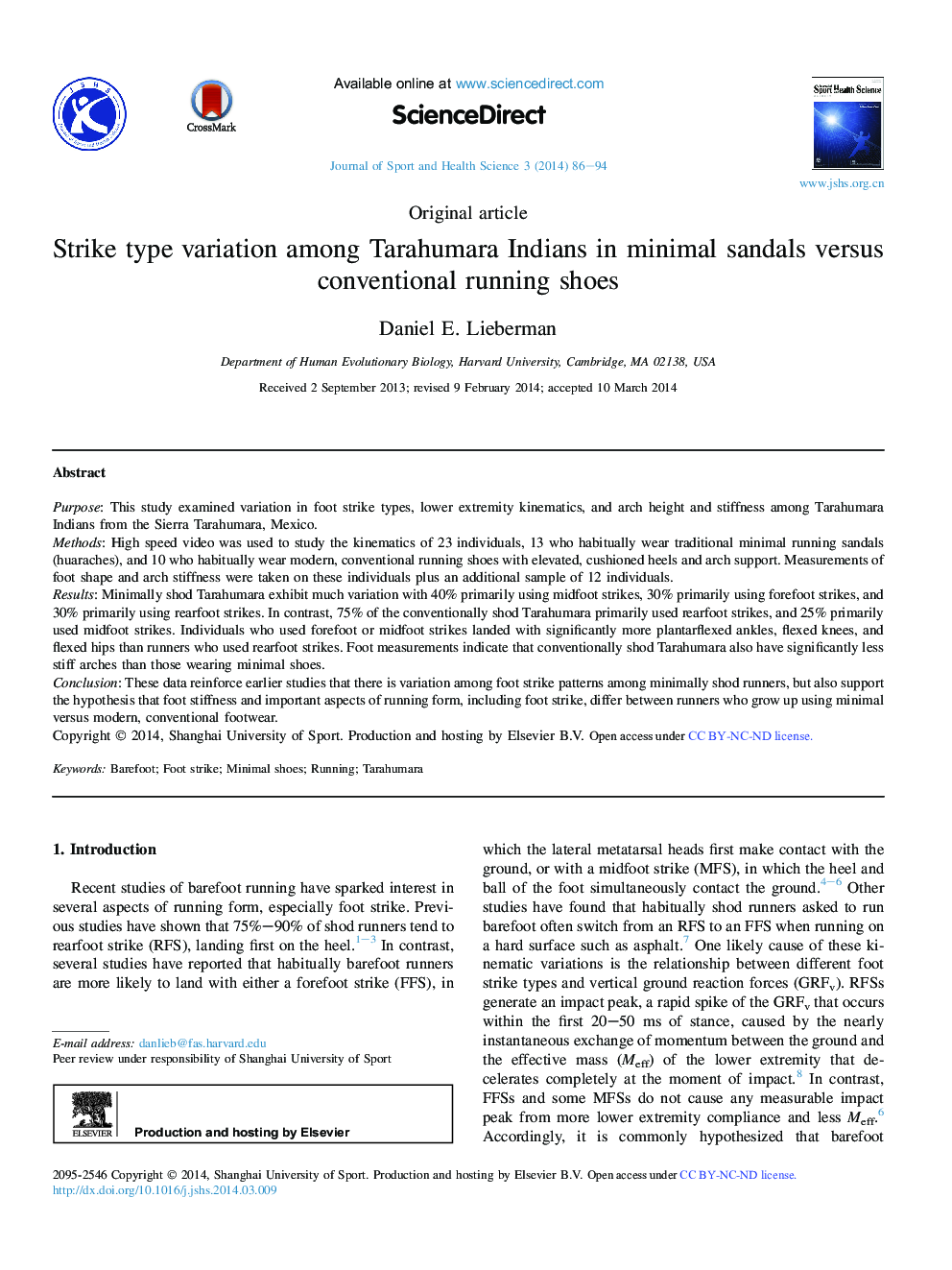| کد مقاله | کد نشریه | سال انتشار | مقاله انگلیسی | نسخه تمام متن |
|---|---|---|---|---|
| 1084135 | 951260 | 2014 | 9 صفحه PDF | دانلود رایگان |

PurposeThis study examined variation in foot strike types, lower extremity kinematics, and arch height and stiffness among Tarahumara Indians from the Sierra Tarahumara, Mexico.MethodsHigh speed video was used to study the kinematics of 23 individuals, 13 who habitually wear traditional minimal running sandals (huaraches), and 10 who habitually wear modern, conventional running shoes with elevated, cushioned heels and arch support. Measurements of foot shape and arch stiffness were taken on these individuals plus an additional sample of 12 individuals.ResultsMinimally shod Tarahumara exhibit much variation with 40% primarily using midfoot strikes, 30% primarily using forefoot strikes, and 30% primarily using rearfoot strikes. In contrast, 75% of the conventionally shod Tarahumara primarily used rearfoot strikes, and 25% primarily used midfoot strikes. Individuals who used forefoot or midfoot strikes landed with significantly more plantarflexed ankles, flexed knees, and flexed hips than runners who used rearfoot strikes. Foot measurements indicate that conventionally shod Tarahumara also have significantly less stiff arches than those wearing minimal shoes.ConclusionThese data reinforce earlier studies that there is variation among foot strike patterns among minimally shod runners, but also support the hypothesis that foot stiffness and important aspects of running form, including foot strike, differ between runners who grow up using minimal versus modern, conventional footwear.
Journal: Journal of Sport and Health Science - Volume 3, Issue 2, June 2014, Pages 86–94